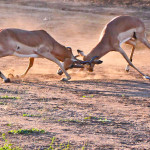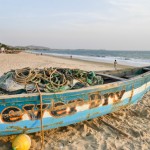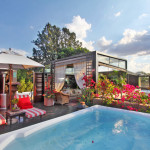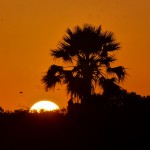Petra Shepherd takes time exploring Malawi and meeting some of the friendliest people in the World.
Malawi, a land locked country bordering Zambia, Tanzania and Mozambique is known as the “Warm Heart of Africa” and rightly so. With Africa’s biggest smiles, dazzling Lake Malawi (the ninth largest lake in the world) and some unique safari experiences it didn’t disappoint.
Lake Malawi
I’m propelling myself through Lake Malawi’s crystal-clear waters, admiring the Seychelles like boulders bordering Mumbo Island, looking for a place to moor my kayak for a spot of snorkelling. There’s not a soul in sight, apart from a few distant fishermen, for an off the beaten track, far removed from reality experience this is as good as it gets.


Lake Malawi is the jewel in the crown of the country’s tourist attractions – the Rift Valley’s ‘Lake of Stars’. Home to the world’s first freshwater National Park and covering a third of the country, Lake Malawi is also the third largest lake in Africa.
Mumbo Island
Lake Malawi’s size and depth gives it a sea-like appearance with one side rarely visible from the other and I did feel as though I was kayaking in an ocean with Mumbo Island with its sandy beaches and palm trees, reminiscent of an unspoilt tropical island. Situated at the Southern end of Lake Malawi, lying 10 kms (a 45-minute boat ride) from Cape Mclear, the island is completely unspoilt, having never been populated it remains in a pristine natural state and is run completely off grid, it took a while to get used to no electricity or wifi.
Think eco retreat but with some creature comforts thrown in. At just one square km, the island is very easy to get around, there’s a series of walking trails with accommodation on a sister island (not called Jumbo!) reached by a wooden jetty. My home for the night a wooden hut, perched high on a hill with a wooden balcony overlooking the lake, a hammock to complete the Robinson Crusoe experience and a full moon, suspended in the velvet darkness, lighting up the room.


It was impossibly romantic, although all I had for company were a few playful lizards. Huts on the east side of the island also have balconies and the benefit of glorious sunrises, enjoyed with morning tea brought by the helpful staff. Although rustic with a compost toilet and bucket shower, the bed with mosquito net was super comfy and a solar lamp perfectly adequate to navigate my way around the room and to dinner on the main island.
With wellness being the buzzword of the moment, Mumbo Island is the ideal place to enjoy sustainable tourism at its finest, to totally switch of and connect with nature. The lake is a real-life aquarium (home to 1000 species of tropical fish, many unique to the lake), snorkelling around Mumbo Island I spotted innumerable species of colourful cichlid fish, far from hiding away, these little fish would happily swim around me, coming up close for a better look. Lake Malawi was “discovered” by the Scottish missionary and explorer David Livingstone just over 140 years ago and it now forms an integral part of Malawi’s cultural heritage, it’s an absolute must do on any visit to the country.
Majete Wildlife Reserve
Malawi is not known for its wildlife, a safari here is more about memorable experiences and not just tick lists. However, there is plenty of game to see in beautiful surroundings but no convoys of vehicles characteristic of some African game parks. At Majete Wildlife Reserve, located in southern Malawi’s low lying Shire river-valley, a herd of elephants were there to greet me quenching their thirst at Thawale Camp’s water hole, the matriarch playfully splashing her young family.

It was a magical sight and just metres away from the camp’s main dining area. I could have stayed there all afternoon but as with most safari experiences, evening and morning game drives are on offer. The evening drives are always my favourite as they involve a sundowner or two. At Majete, sundowners were on the bank of the Shire River with yet more elephants, this time silhouetted in the full moon light or on my second night enjoyed after a short climb to the top of a large rock with a full 360-degree view of the park and the setting sun.

Majete is not a savannah like many parks, so no large open grasslands making it easy to spot the animals, instead this highly diverse reserve features undulating hills and mixed woodland punctuated by the ghost-like star chestnut trees and large mahoganies. It’s an incredible story of a reserve, once in decline, transformed into a haven for wildlife.
Liwonde Game Park
Although only 210 sq miles, Liwonde is the most popular of Malawi’s game parks. 100 miles from Blantyre, game viewing is enhanced because the River Shire flows along its western border, allowing for boat safaris as well as the usual 4 x 4. Wildlife includes large numbers of elephants with the river attracting countless hippos and crocodiles. Antelope include kudu, sable and bushbuck. African Parks took over the park management in 2015, safeguarding its future and allowing it to develop even further. Black rhino, lion and cheetah have been re-introduced and more re-stocking is planned.
Zomba
Zomba, the former capital is just 40 miles north-east of Blantyre (Malawi’s second largest city). In a lovely setting below the plateau of the same name, this was the first settlement of the colonial administration. Combining architectural heritage with contemporary design, Kefi Hotel Café is a modern boutique hotel and café in Zomba, that reflects the town’s remarkable history.
It was an ideal place for me to relax and break up the long journey from Majete in the South to Lake Malawi, taking in the unparalleled view of Zomba from the terrace and the distant Mulanje mountains with a mean cocktail and some of the best Malawi produce. I can highly recommend.

Malawi is an all-year round destination with two main seasons, wet and dry. April to June combine the best of both seasons (I visited in April) – cooler, green with great visibility and excellent for photography. Game viewing is best in the dry season when animals are forced to visit water sources. Birdwatchers also enjoy their best sightings in October and November.
Although going on a safari is a major draw, personally it’s people and culture that fascinate me most. There are many reasons why you should visit Malawi but perhaps the country’s greatest asset is its people. Malawians are arguably some of the friendliest people in the world and it’s not surprising that Malawi is referred to as “The Warm Heart of Africa”.
Malawi is home to more than 12 different ethnic groups. The largest group is the Chewa, whose mother tongue is Chichewa. Drums, dance and masks play an important part in the local culture, as witnessed in a traditional welcome to the president who was speaking at a trade show I was attending. I can’t pretend that I didn’t also join in with much merriment on both sides.
Lilongwe
The most convenient way to divide Malawi is to use the capital Lilongwe, in the heart of the central region as a dividing point between the north and the south. Lilongwe was made Malawi’s capital by the country’s first president Dr Hastings Kamuzu Banda.
The Old Town is very different to, and distinct from the newer Capital City – the two parts separated by the Lilongwe Nature Sanctuary which is also home to the Lilongwe Wildlife Centre. There is something wonderful about experiencing the chaos of an African market, live chickens, music blasting out from every corner, exotic fruits and even more exotic snacks. Crunching away on a deep-fried grasshopper is one of those travel taste experiences, I’m happy to try once but perhaps won’t repeat.


Once all my senses had been assaulted, a walk along the 6 km of beautiful nature trails, winding along the Lingadzi River and through the forest of the Linglongwe Wildlife centre offered some welcome respite. Spanning 70 hectares of forest, Lilongwe Wildlife Centre is a unique nature reserve in the heart of the capital, home to a diverse range of wildlife, including vervet monkeys, duikers, bushpigs, jackals and over 200 bird species.
Malawi’s smallness is also its appeal, my visit was brief, just a matter of days but I felt I got a real taster of the country. It’s one of the easiest African countries in which to combine “bush and beach” and is more affordable than other safari destinations. Another plus is that visa restrictions have recently been scrapped for UK visitors and the people are incredibly friendly and welcoming. I hope one day to return to discover the less well-known North with Likoma Island and Nyika National Park, there’s so much more to this small African country than I ever imagined.
All images (C) Petra Shepherd
Tell Me More About Exploring Malawi
Malawi Tourism offers more details about exploring Malawi.
Visit Malawi has plenty of information on what to do and where to go.






